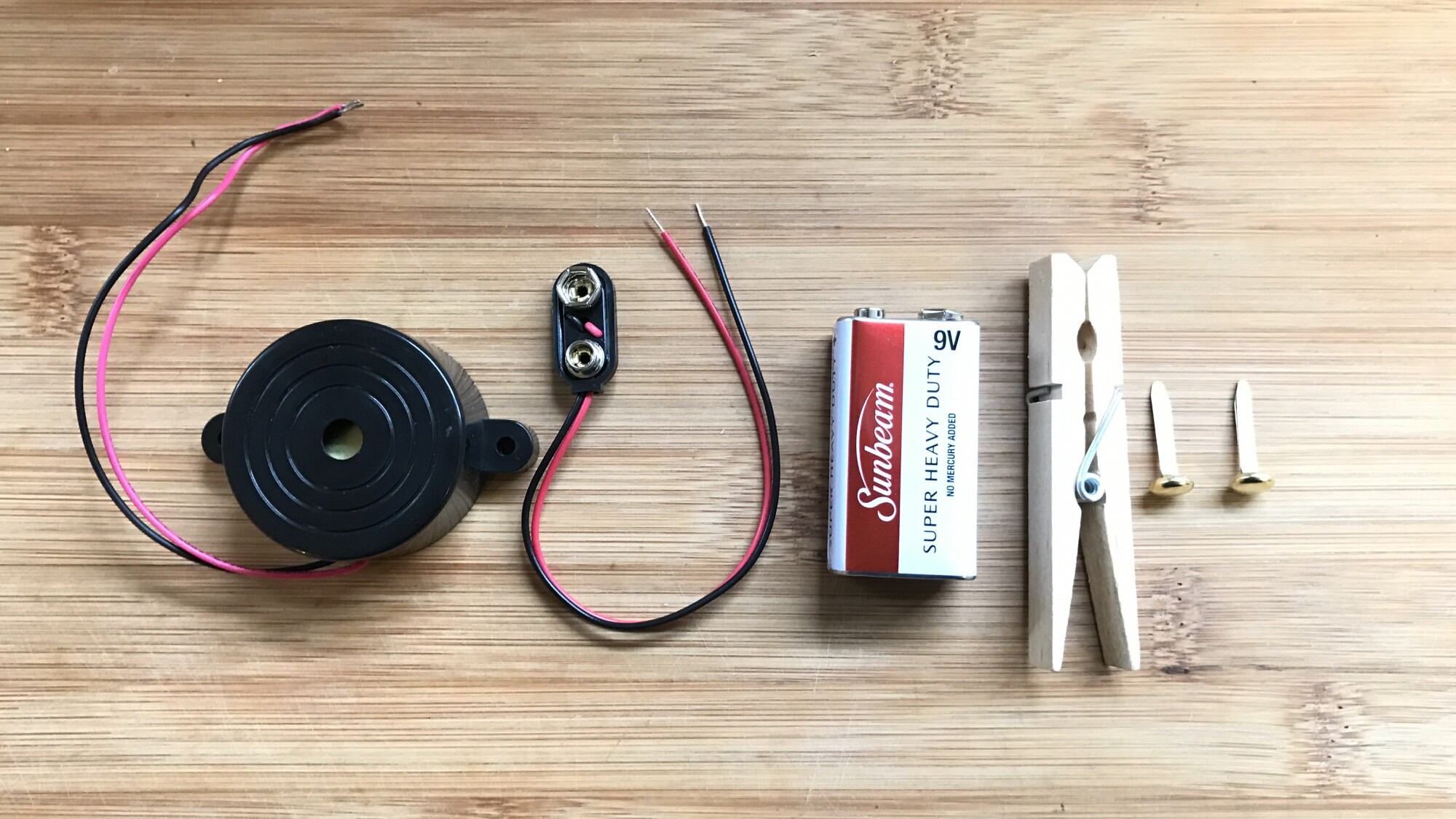In this week's print edition, we put together some security tips for backyard cannabis growers, including scarecrow tactics and remote surveillance recommendations, as well as notes on booby trap do's and don'ts.
For the latter category, booby traps, we made the case for tripwire alarms, as they're inexpensive, easy to build, and extremely effective in scaring off would-be crop toppers.
While people have been known to hook up tripwires to everything from bottle rockets to shotguns, we opted for an electronic siren alert, as it won't take anyone's eye out, but it will survive the elements and make plenty of noise when triggered.
Here's how we built this wicked-loud tripwire alarm for less than $20.
Materials:
Wooden clothespin (1)
Brass fasteners (2)
9V battery (1)
9V battery snap connector (1)
Piezo siren (1)
String, thread or fishing line (length as needed)
Tupperware or similar plastic container (1)
Tools:
Drill or Dremel
Soldering iron
Electrical tape
Hot glue gun
Basic Concept:
For this tripwire alarm, we'll be powering a 108 decibel Piezo siren—the same sound element found inside a smoke detector—with a standard 9V battery. In order to activate the siren when our tripwire is disturbed, we'll use an on/off mechanism made out of a wooden clothespin and two brass fasteners. This clothespin will pinch down on a small piece of plastic attached to a string, and when tension is applied to the string, the piece of plastic will slide from the clothespin's grip, the circuit will activate, and the siren will make loud noises.
Step One: Clothespin Trigger
First, we'll make an on/off trigger with the clothespin and brass fasteners.

Start by drilling matching holes through the front end of each half of the clothespin. The holes need to be big enough for the fastener legs to fit through, but not so large that the head does too. Something like this:

Next, thread the brass fasteners through the holes you've made—via the inside surface of the clothespin—and fold the legs over the clothespin's exterior to hold the fasteners in place. The two fasteners will complete the circuit, so the heads must touch when the clothespin is closed.

Step Two: Simple Circuit
Next, we're going to build our circuit.
Start by testing the polarity of your Piezo siren with your 9V battery, matching red wire to red wire, black to black. When the circuit is complete, the sound should activate.
Once you've confirmed your polarities, join the 9V to the Piezo, red wire to red wire, either by soldering, or by folding and twisting the bare wire tips together. Cover the exposed portion of the joined wires with electrical tape.
Now, solder the black Piezo wire to either of the two brass fasteners used for your clothespin trigger, and do the same with the black 9V wire, soldering it to the remaining fastener.

Voila! There's your complete circuit. If you've done everything right, you should be hearing a very loud noise.
Step Three: Enclosure
After completing our electrical engineering tasks, we'll need to make an enclosure to protect our alarm from the elements.
This is where the Tupperware or similar plastic container with a lid will come into play.
First, make a small hole in the lid, and thread your tripwire of choice through it. Tie the end of the string that's on the inner side of the lid to a bread tab or other piece of plastic that you've elected as your trigger's stop mechanism.

Inside the Tupperware, use hot glue to secure the battery and siren to the bottom of the container. Glue down the clothespin trigger-side up to ensure that it doesn't come loose when there's tension on the line.

Once everything is glued down, you can put on the lid and admire your work.

Installation:
While everyone's grow is a little different and you'll need to get creative with your install, there are a few things to keep in mind.
First, though the central function of your alarm is to scare off intruders, you can get extra mileage out of your build by making sure it's audible from within your house. We recommend playing around with installation sites until you find a location that covers all your bases.
Additionally, even with a protective case for your alarm, you'll want to be extra cautious to keep it dry, as water can fry your electronics. That means installing your alarm in such a way that minimizes exposure to rain and standing water.
Lastly, you don't wanna wake up the neighborhood in the middle of the night with false alarms, so make sure your tripwire is positioned at a height that will allow for pets and neighborhood animals to pass freely.

